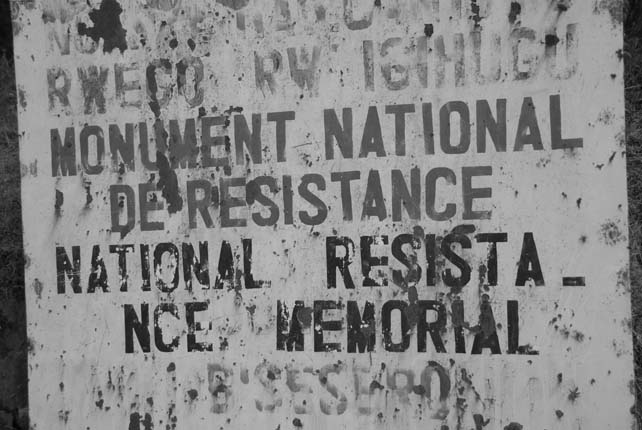
|
The Bisesero site is located in Western Province. Click on the image for a slideshow of photographs. All photographs © 2002-2008 Jens Meierhenrich except Photograph 2 © Kigali Memorial Centre. |

|
The Bisesero site is located in Western Province. Click on the image for a slideshow of photographs. All photographs © 2002-2008 Jens Meierhenrich except Photograph 2 © Kigali Memorial Centre. |
In the hills of Bisesero, Rwanda, not far from Lake Kivu, landscape and memory of the 1994 genocide are deeply intertwined, both literally and figuratively. From the relative safety of these hills—notably from a hillside named Muyira to which most of the survivors of the initial genocidal attacks had fled—it was possible to fend off Hutu génocidaires, militias and military alike, for nearly three months. Defeat came only on July 1, when the Abasesero (as the Tutsi of Bisesero are known) were finally overrun. The “National Resistance Memorial” pays tribute to the feat of Bisesero’s resistance in an architecturally—and spatially—unique way. It commemorates both suffering and survival. Save for a dark shed made of corrugated iron holding the skeletal remains of 1,006 victims at the foot of Muyira, the memorial complex was etched into the hillside. Its peculiar structures (ranging from an abstract archway to a bunker-like edifice to four empty exhibition buildings) and the stone pathway connecting them meander in a zig-zag pattern up the hill. The design was deliberate. It recalls the zig-zag patterns and constant changes of direction that many Tutsi were forced to adopt while running for their lives up the hillside in an attempt to escape the Interahamwe hunters on their heels. Only the top of Muyira, where modern tombs were built in 2004, was considered safe. But few remained safe. A preliminary accounting of the victims of the genocide in the hills of Bisesero found less than 1,500 living and nearly 50,000 dead.
Copyright © 2010 Jens Meierhenrich. All rights reserved.